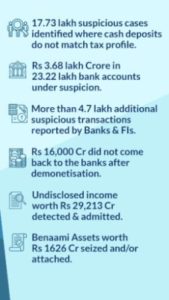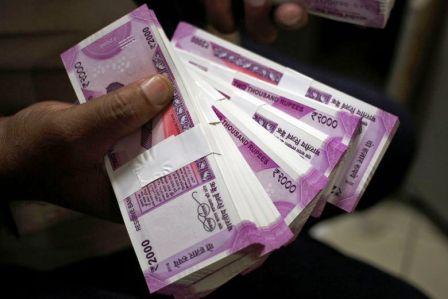A former bureaucrat turned politician puts the spin on the demonetization narrative.
Black money is like a chameleon. Its multiple forms — in cash, real estate and gold, in tax havens, shell companies and benami properties — make its detection difficult. That is why when asked the reason for frequently changing goalposts after demonetisation, Prime Minister Narendra Modi replied, “One must distinguish between niti and rann niti.” Thus begins an article by former bureaucrat turned politician NK Singh.
PM Modi realizes that the war against black money is a war for the poor. Constant revenue leakage impairs the state’s ability to provide improved infrastructure, security to life and property, rural roads, sanitation, healthcare amenities and growth opportunities necessary for an equitable and cohesive social order, he says.
Apart from demonetisation, the government has constituted a Special Investigation Team (SIT) to unearth black money, enacted The Black Money (Undisclosed Foreign Income and Assets) and Imposition of Tax Act, 2015, to deal with black money stashed abroad, and amended the Benami Transactions Act, 1988 to enable the confiscation of benami property.
The main objective of fighting black money is to improve tax compliance and broaden the tax net.
Ripping away the mask of shell companies destroys their anonymity. The government has engaged with foreign governments to facilitate the exchange of information under various double tax avoidance treaties.
Singh contends that the early evidence after demonetisation suggests a meaningful increase in the tax base. The number of taxpayers increased from 55.9 million in 2015-16 to 65 million in 2016-17. The 16 per cent increase in 2016-7 is unprecedented. There was also an almost 27 per cent surge in new income tax filers in 2016-17 — compared to 20 per cent in the previous year and 5 per cent the year before that. Direct tax collections between April and July 2017 increased by more than 19 per cent over the same period in the previous year. This is impressive since the nominal GDP grew by just 9.3 per cent in the April to June quarter.
The more tax collected, the better for the government. The extra resources can be spent on important public goods and welfare programmes, including those pertaining to health and education. Public spending will boost economic efficiency and growth as well as reduce poverty and income inequality.
A successful fight against black money reduces the reliance on indirect taxes. Indirect taxes are regressive, and should be modest in a relatively poor country such as India. The fight against black money, therefore, is also a battle to make the tax system more progressive.
A broader tax base — all else being equal — can result in authorities lowering tax rates, especially for those at the lower end of the income spectrum. Lower tax rates can then improve tax compliance, leading to a virtuous cycle of an ever-broadening tax base and lower rates.
Black money stays out of the formal financial system. Domestically, it is either saved in unproductive physical assets (gold, real estate) or in currency-in-circulation. Consequently, the more the black money in an economy, the lower the formal financial savings. This will result in higher interest rates than necessary, or a larger than required current accounts deficit.
Indeed, the flood of deposits after demonetisation — and the fact that a large fraction of these deposits have remained with the banking system (because currency in circulation is lower in the new equilibrium compared to what it was before) — has boosted financial savings and asset prices. It has allowed for structurally lower interest rates, with banks slashing their MCLR rates by 90 basis points after the post-demonetisation influx of liquidity.
Black money seeks alternative destinations through capital flight in the form of export under-invoicing or import over invoicing. Both widen the current account deficit and the balance of payments, thereby creating artificial stress on the external sector and the rupee.
Broadening the tax base by mounting a fight on black money is, therefore, both pro-growth and pro-poor, argues Singh.
The goods and services tax (GST) will undoubtedly broaden the indirect tax base. (Wait a minute, didn’t Singh just say that indirect taxes are regressive?)The value added tax that existed before this tax regime did not span the entire spectrum of the economy. Once taxpayers are in the net for indirect taxes, they will potentially also be in the net for direct taxes, thereby potentially broadening the direct tax base.
Waging a war on black money does come with the near-term costs. To the extent that small and medium enterprises were outside the tax net — and are also marginal job creators — there were bound to be short-term transition costs. But they pale in comparison to the expected medium-term benefits and larger social good.
In other words, what Singh tells us is that demonetization in the long run, has been good for us, so we have no other option but to grin and bear it.
